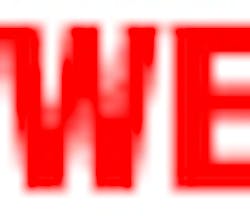A few years ago, a man named Garrett Lisi, who has a doctorate but no university affiliation and spends most of the year surfing in Hawaii, put forth a paper in theoretical physics entitled “An Exceptionally Simple Theory of Everything,” which proposed a unified field theory combining the grand unification theory of particle physics with Albert Einstein’s general relativistic description of gravitation. This paper has rocked the theoretical physics world and polarized many of the leading academics that dwell in this area because it claims to be the answer physicists have been searching for.
In the world of stormwater regulation, we are still searching for the “exceptionally simple solution to stormwater quality.” When we do find it, I am sure that it will include nonstructural and structural best management practices, as well as true source control, a concept that has received too few resources in our search for the “answer.”
Progress to improve surface water quality seems to have stalled somewhat. We continue to invest heavily in the urbanizing fringe, but this will not improve current conditions. We appear to be working the problem backwards, spending our time looking for receiving water problems caused by the seven million or so commercially available industrial chemicals that find their way into stormwater. Once something is identified as a “pollutant,” we try to strain the problem chemical out at the end of the pipe if it exceeds a standard–if one exists. At issue: Chemicals are deemed safe until we prove that they are harmful in the environment. By then significant resources have been expended, the newly discovered pollutant is everywhere, and there is no clear (or cost-effective) path to fix things. Consider that the US generates or imports 42 billion pounds of industrial chemicals per day. It is clear that we cannot protect receiving water beneficial uses at the end of the pipe, or continue to look for problems one by one in a universe that spans over seven million possibilities.
True source control eliminates the potential for stormwater to come in contact with pollutants. This can be accomplished by covering or otherwise containing the pollutant source (traditional source control), but with the myriad of exposure pathways available in an urban environment, we cannot expect measurably better results with this approach than we have achieved to date. We must begin to eliminate chemical pollutants from commercial use; this will most effectively be accomplished over the long term using green chemistry. Wikipedia defines green chemistry as “a philosophy of chemical research and engineering that encourages the design of products and processes that minimize the use and generation of hazardous substances. Green chemistry seeks to reduce and prevent pollution at its source. It aims to avoid problems before they happen.”
The field of stormwater quality should fundamentally be about good science. And good science means expanding how we look at things and attacking them from different angles. Surface water runoff volumes are far too high, and there are far too many pollutant contact pathways to make “treatment” viable as one of our first-line tools. Implementing true source control will be challenging. People aren’t used to having to meaningfully change their lifestyle to protect surface water quality. Replacing or eliminating key chemicals in the modern economy using tools such as green chemistry will be very costly–but ultimately much cheaper than total maximum daily loads replicated one by one all over the country, I am certain of that.
The challenges and decisions we face in stormwater quality will increasingly be political rather than technical, but we must continue to improve at the technical level. Our numerical models need to look at impacts to nature in a continuous, rather than event-based, fashion. We need to value stormwater as a resource and treat it as such when designing urban projects; the built environment does not reflect the value of water. Regulations are becoming increasingly prescriptive; they are viewed as the way to affect change, when in reality they are not flexible and eliminate the possibility of creativity in solving what is a very complex problem.
The problem of surface water pollution is not going away or getting any easier to solve as time passes. Wikipedia notes that the earth’s population is increasing by about 220,000 people per day, and this makes work on an affordable solution to stormwater quality all the more important. To be successful, we need to start investing in a strategy that has a reasonable endgame. I am convinced that true source control is a significant part of that strategy.
About the Author
Scott Taylor
Scott Taylor, P.E., D.WRE, FASCE, is a project director with AtkinsRéalis in San Diego, CA.


